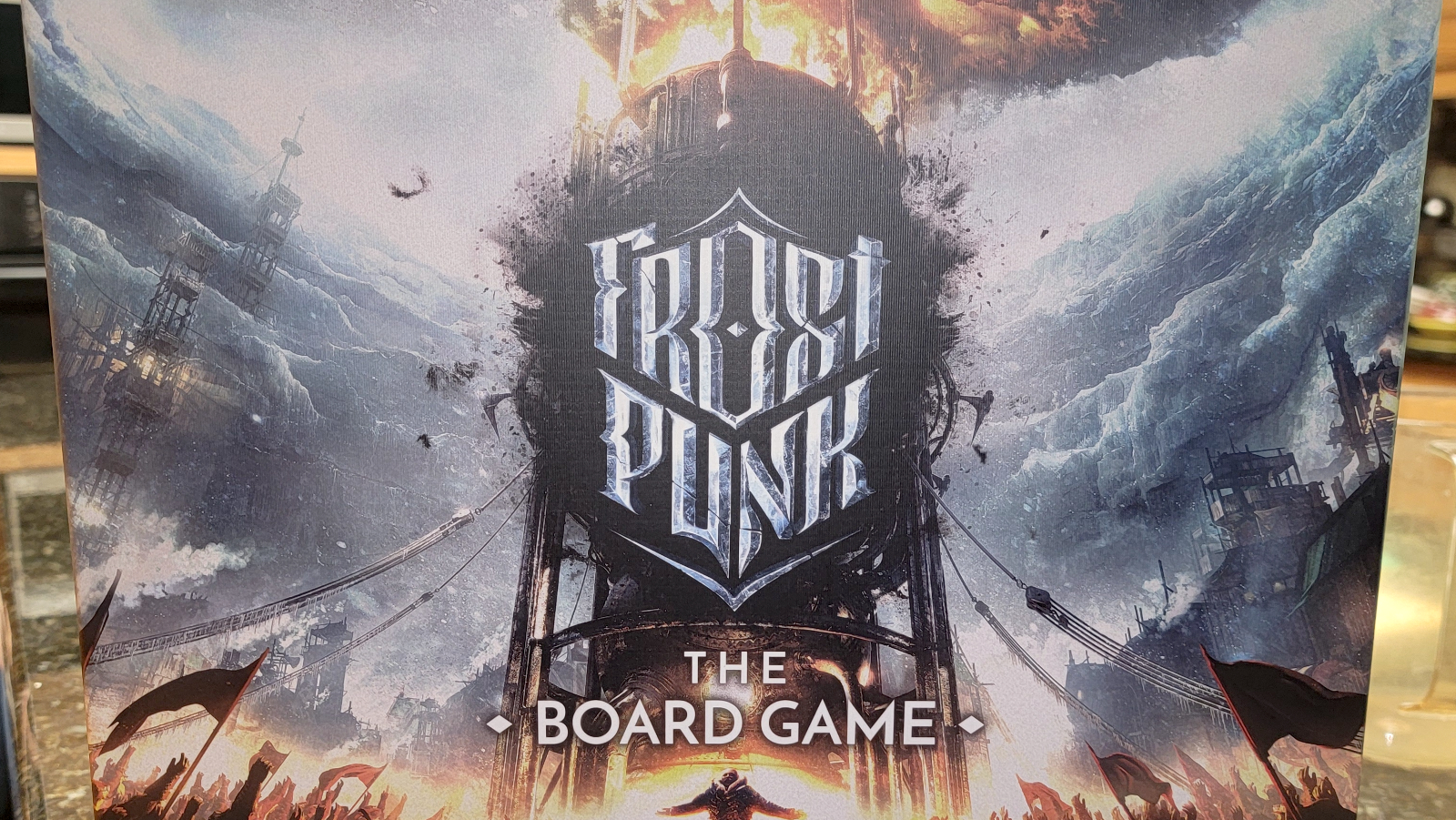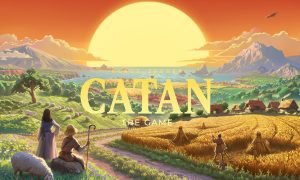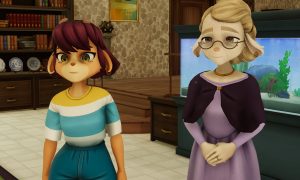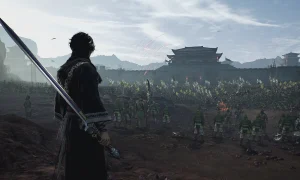Frostpunk: The Video Game sports a steampunk coat of paint, the stylish, often meaningless brass cogs and aviator goggles, but the real hook was “global warming in reverse.” It’s a satire equipped with the macabre comedy of that old Robert Frost poem:
Some say the world will end in fire
Some say in ice.
From what I’ve tasted of desire,
I hold with those who favor fire.
But if I had to perish twice,
I think I know enough of hate
To say that for destruction ice
Is also great
And would suffice.
“Global cooling” has come and gone. You, as the leader of a few “lucky” survivors, are managing the aftermath.
It isn’t a retro-futuristic tale so much as a recitation of the human rights you can expect to lose. The nine-to-five? Gone. Bring back the twelve-hour workday. Childhood? A social invention created by French philosophers. Little Clarence should shovel his sixteen tons like anyone else. And when the average denizen of your dystopia lifts their gaze skyward and asks what it’s all for, you have two opiates on offer: a state cult or the promise of a gentler hereafter for the well-behaved.
You can implement more humane options, of course. You can implement prosthetics for the injured, cemeteries instead of paupers’ burials, and six-hour double shifts. The costs, however, strike immediately and every gentler, more enlightened decision lays the foundation for more desperate ones later on.
Frostpunk creates a thicket of those decisions while its climate crisis mounts in the background. If you make enough compromises to save your colony, the game concludes with a time lapse video of your colony’s construction and decisions. The supertext “The City Survived, but Was It Worth It?” flashes on screen.
A powerful message but arguably a flawed messenger.
“Dissonance” might be a more tactful word to describe the emptiness at the heart of the experience. Frostpunk creates a tension between social engineering and the petty, inconvenient truths of being human, but its delivery sides overwhelmingly with the former.
Its digital children and villagers are easy to ignore and dismiss. On top of everything else, the game’s a parody of the city-building genre – your Sim Cities and Tropicos and Farmvilles – and a solitary exercise. You’re an autocrat. Sure, you can click on one of the virtual ants and read its Facebook bio (“currently walking to the bar,” “feeling hopeful,” etc.). That’s a feature that at least dates back to 1998’s Caesar III. Regardless of how specific or flavorful that information is, it never touches gameplay which is mainly about juggling menus and efficiency.
Perhaps one could argue that this adds yet another layer of meaning. The player’s a social engineer in the most literal sense, the minder of a boiler that just so happens to look like a human being. It’s the classic sci-fi nightmare that Ender’s Game introduced to most. The game is not a game. The children are playing, but their swords are real and their flesh is real, too. Mixing blood and innocence predictably unnerves us.
Frostpunk: The Video Game tries to make the puzzle so challenging and fun that your ethical transgressions sneak up on you. At the end of the day, it’s a glorified ant farm.

Frostpunk: The Board Game has caught some flak for its unyielding commitment to the mechanisms of the original and its huge footprint on the table. There’s merit to that argument. Many cardboard tie-ins to video games (and the people who buy them) see the divide between the mediums and try to skirt it. Bioshock Infinite, for instance, is the story of two people shooting their way out of a civil war. Bioshock Infinite: Siege of Columbia assumes the perspective of the soldiers and plays like a souped-up Risk. It reframes the material to comfortably fit pre-existing tabletop expectations.
Frostpunk: The Board Game tackles the problem directly. You tally food, sickness, shelter, engineers, children, and falling temperatures. You collect the wood to erect homes and the coal to heat them. You research technology and send expeditions into the ice. Even its inciting incident, the disappearance of a sister colony called “Winterhome,” comes straight from the source material. It clocks in regularly around 3-4 hours.
Granted, designer Adam Kwapiński (known mostly for Nemesis) has made these elements accessible. He eliminated the raw food mechanism and moved the arithmetic within reach of the average mortal, taking a full digit off pretty much every calculation you make. This is an expert translation and fully within reach of the average person. Still, the directness of its approach can make the exercise feel quaint as a penny farthing. Unless you need the workout, take a cab.
Four little sheets of paper in the box change everything. They may look like player aids, but they’re scripts for a city council. Their dialogue and motivations are there, coded in round summaries and icons. They’re nudging you in the direction the game wants you to go.’
“Emergent narrative” is a concept thin as gossamer – so thin that you doubt whether or not it exists at all. You have to feed your family in Agricola or they “beg” and you lose three points. Is that it? Junta: Viva el Presidente! Comes with a pair of cheap black sunglasses to wear, and someone will inevitably pull out their best Fidel Castro impression. Is that it? What about Once Upon a Time or Ultimate Werewolf, whose rules could fit on a napkin? What about Chronicles of Crime or Roll Player Adventures, which actually come with dialogue trees?
Those examples are clever metaphors, improv, or overt narrative, respectively. Useful tools. Nevertheless, emergent narrative is more like what Marlon Brando was trying to achieve.
Brando, best known to younger generations as Jor-El in Superman II or Colonel Kurtz in Apocalypse Now, gained notoriety for laziness. This wasn’t due solely to his weight, though Apocalypse Now’s director was understandably upset that Brando promised to drop pounds to play a colonel and showed up on set with 300 of them. He refused to even glance at a script, much less memorize it. He read dialogue off cue cards hidden around the set and plastered on actors’ backs. Allegedly, when he was placing Superman in his escape pod, his lines were on the baby’s diaper.
But there was a brilliant impulse behind it. He argued that, in reality, his character would conceive their words in the moment, pressed by circumstance. From this point of view, seeing the lines for the first time brought him one step closer to truth. Obviously, that drove him to goofy extremes. Pity the poor stagehand tasked to scrawl on Huggies with a Sharpie. But emergent narrative aspires to that moment of eclipse, when we forget ourselves.

In every game of Frostpunk I played and with every player count, we somehow drew the “Prostitution” dilemma. Everyone understood the implications immediately. It is the oldest profession, after all, and even capuchin monkeys understand its advantages. We needed to decide between education, prohibition, or acceptance. On an issue that would be a landmine in any other context, we sat in council. Opinions flowed like water between the game and our real lives. Some of them were sex-negative and some were sex-positive. Frostpunk coaxed out the ideals we tend to keep hidden in mixed company. All of us suspended our judgment because this game is that hard, dammit! We had our values, but we respected compromise (or even the unwillingness to compromise).
Frostpunk: The Video Game purports to be about community, but it becomes a story about a machine. Moving that story into the analog realm gives it protagonists. It shifts our sympathies closer to the villagers huddling together against the ice and darkness. No amount of menus, time lapses, or flavor text can replace turning to the person next to you and asking, “Can you live with that?”
No paid copy provided for this review.
If you liked this, consider donating to the author at his website www.weeksauthor.com. GamingTrend is composed of volunteers who dedicate their free time to the hobby we love. Financial support means more time spent writing and more articles like this one!
Sean Weeks fell in love with the modern tabletop scene in 2004 with Tom Lehmann's Race for the Galaxy,but his chief passions are writing, antiquity, and anthropology. You can read his work in Paste Magazine or (formerly) Dicebreaker.

Frostpunk: The Video Game purports to be about community, but it becomes a story about a machine. Moving that story to analog gives it protagonists. It shifts our sympathies closer to the villagers huddling together against the ice and darkness. No amount of menus, time lapses, or flavor text can replace turning to the person next to you and asking, “Can you live with that?”
PROS
- Consistently rich narrative arc.
- Tight mechanisms and weighty decisions.
- Great sense of accomplishment.
- Cooperative puzzle big enough to encourage cooperation.
- Excellent base game production. Kickstarter materials nice, but not essential.
CONS
- Long length (3-4 hours).
- Table hog.
- Keep away from players with analysis paralysis.
- Involves real-world issues.
See below for our list of partners and affiliates:

























